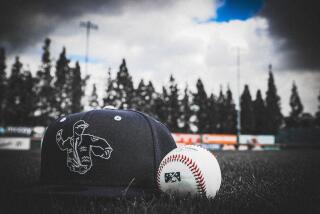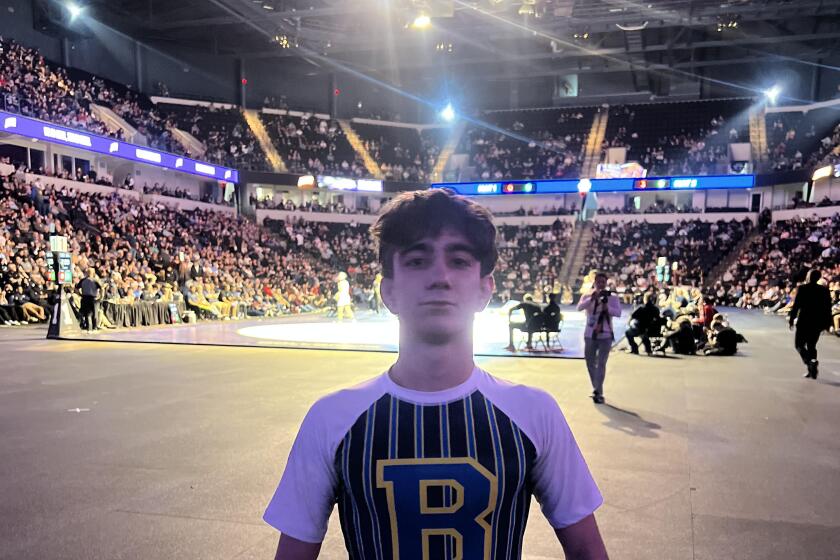What’s in a nickname, mascot or sports tradition? Sometimes tinges of racism

- Share via
The “Gator Bait” chant had long been a staple of college football, a way for Florida Gator fans to taunt opposing teams. As the marching band struck up a familiar tune, they rose from their seats by the thousands to extend their arms and make a chomping motion, filling the stadium with rhythmic claps.
The tradition came to an abrupt halt last month, banned for a reason that might have surprised some boosters: The term “Gator Bait” had links to slavery and an era when, according to historical accounts, alligator hunters used Black children as human bait.
“While I know of no evidence of racism associated with our ‘Gator Bait’ cheer,” university president Kent Fuchs stated, “there is horrific historic racist imagery associated with the phrase.”
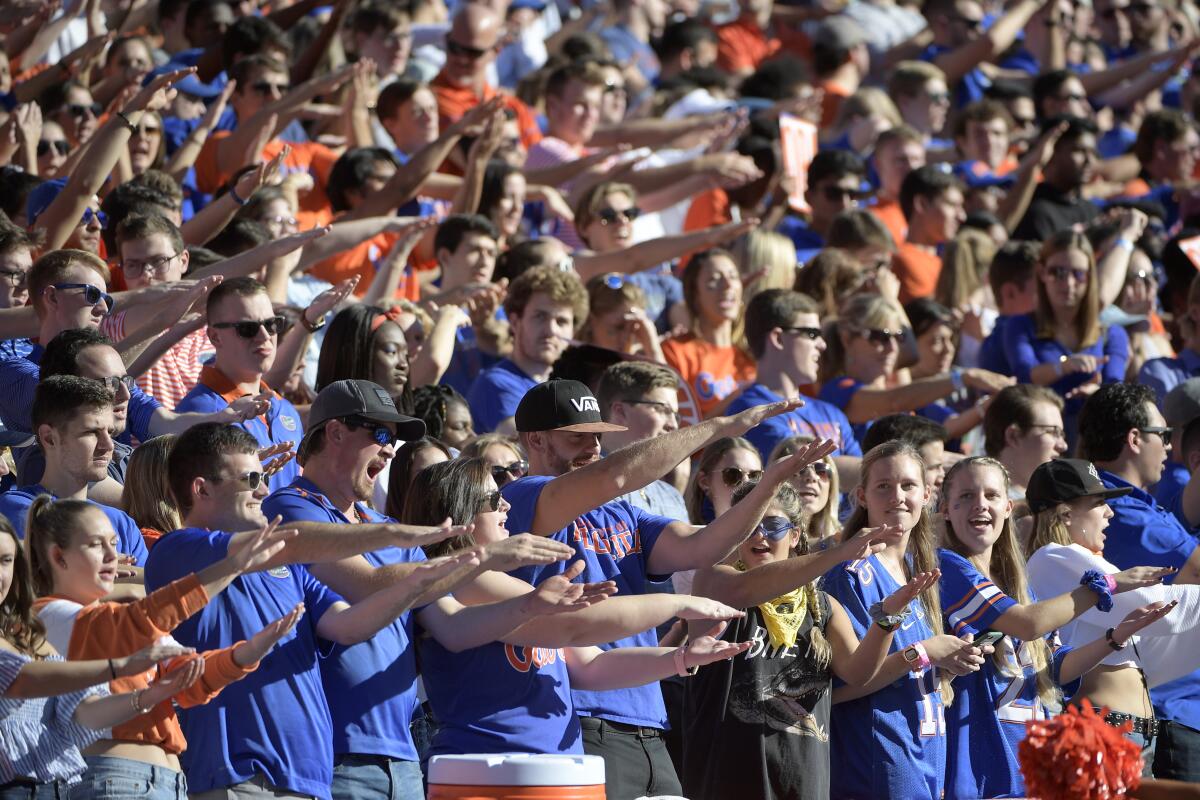
The announcement followed similar incidents at Virginia, where administrators hurriedly recalled a new logo because of its unwitting reference to slave labor, and Texas, where athletes protested a school song, “The Eyes of Texas,” with minstrel origins.
In the weeks since George Floyd‘s death, amid nationwide protest, the world of sports has been forced to revisit a legacy of insensitive mascots, songs and cheers. On Thursday, FedEx, which holds the naming rights to the Washington Redskins’ stadium, asked the team to change its name. On Friday, the Redskins announced they would undergo a “thorough review” of their name “in light of recent events around our country and feedback from our community.”
This kind of soul-searching recurs every decade or so, stretching back to the 1970s, when schools began abandoning questionable nicknames in response to public pressure. This time feels different, reaching beyond the obvious to demand an understanding of history.
Florida fans probably don’t know the unspeakable history of the phrase “Gator bait,” but they are no longer allowed to use it as a cheer at sporting events.
“We’re at this time of reckoning,” said Arianne Eason, an assistant professor at the University of California who has studied Native American mascots. “I do think sports can be a real vehicle for change.”
The controversy at Virginia involved an ostensibly small detail. Unveiling a remade logo in April, the athletic department kept the same block “V” and crossed sabers, but added rippled grips to the blades, mimicking a school landmark known as the “serpentine” walls.
Students and faculty pushed back immediately, noting the walls were originally constructed in the 1820s to hide the use of slave labor on campus. Media studies professor Meredith Clark tweeted: “Every single day, Black students, staff, faculty and community members walk by those walls, the bricks with our enslaved ancestors’ fingerprints in them.”
University administrators said they did not know the walls’ full history and were still pondering the issue in late May. Then Floyd was killed and, within a few weeks, the logo was withdrawn.
“There was no intent to harm, but we did, and for that I apologize to those who bear the pain of slavery in our history,” said Carla Williams, the school’s athletic director, who is African-American.
At Florida, where administrators also took action after Floyd’s death, reaction was varied. Some fans argued that, although “gator bait” qualified as an epithet — albeit not widely known — there was scant evidence of hunters actually using Black children as lures. A Change.org petition to keep the chant had drawn 498 signatures by last week.
But former football coach Steve Spurrier told the Gainesville Sun that when he heard about the controversy over the chant, his response was: “Let’s get rid of it.”
Racist sports names and rituals date a century to the Cleveland Indians in baseball and the Oorang Indians and Duluth Eskimos in football. Early teams often drew upon Native American lore.
“Native imagery was very popular in the newspapers ... with theater groups and musicians,” said Jennifer Guiliano, author of “Indian Spectacle: College Mascots and the Anxiety of Modern America.” “They were all telling the story of conquering the American West.”
But this vision was overtly romanticized. “We were honoring the Native Americans’ sacrifice and their death,” the Indiana University-Purdue University Indianapolis associate professor said. “The problem is, they didn’t go anywhere. The government was moving them to reservations.”
Hundreds of colleges and high schools joined in the trend, choosing mascots that ranged from generic (Indians, Redmen, Braves) to specific (Senecas, Choctaws, Cherokees). Other minority groups came into play.
At Pekin High in Illinois, teams called themselves the Chinks and had “Mr. Bamboo” as their mascot. Athletes at Wahpeton High in North Dakota were known as the Wops.
It was a sign of the times that even some all-Black teams adopted questionable names. With baseball still segregated, barnstorming clubs mixed sport and entertainment to attract white fans; the Miami Ethiopian Clowns were famous for theatrics and the Zulu Cannibal Giants played in grass skirts.
Scholars warn against underestimating the social impact of mascots. A recent study from the University of California and University of Michigan showed 57% of respondents who strongly identified with being Native American and 67% who frequently engaged in tribal culture practices were “deeply insulted” by caricatures based on their heritage.
Equally hurtful was fan behavior such as the tomahawk chop, a tradition at Florida State, Kansas City Chiefs and Atlanta Braves games.
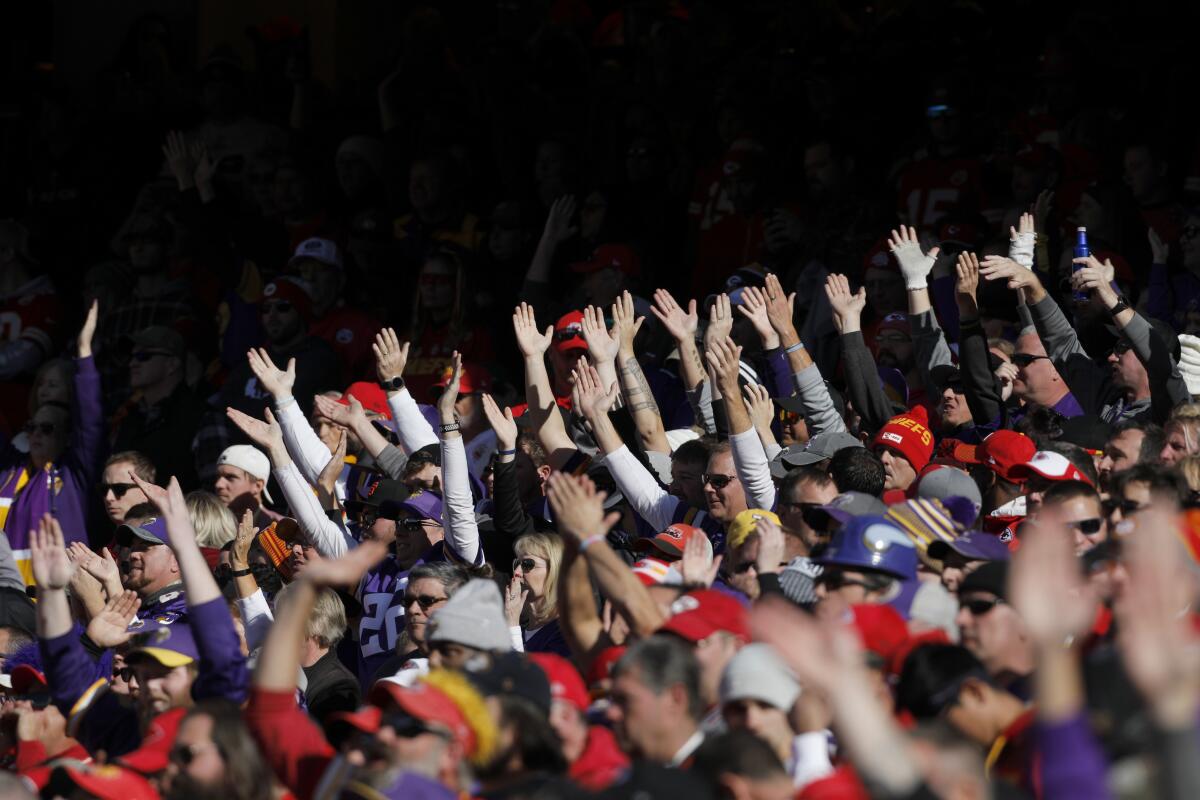
“It’s something that people often gloss over,” said Eason, the California professor who co-wrote the study. “Scientific research continually shows it impacts Native youth, with higher depressive symptoms, suicide rates, anxiety.”
Stanford was among the earliest universities to respond to concerns, dropping its Indian mascot in 1972 to become the Cardinal. Dartmouth, Syracuse, Marquette and St. John’s made similar changes and, in 2012, North Dakota voters dumped the name “Fighting Sioux” from their state university.
More recently, Quartz Hill High abandoned its mascot of more than five decades, known as “Johnny Rebel,” after years of controversy. The school’s change of heart was triggered by the death of Robert Fuller, a 24-year-old Black man found hanging from a tree outside the nearby Palmdale City Hall. Community members raised the issue of the mascot at a school board meeting the following night and an online petition to lose the name drew more than 5,400 signatures.
“We got something changed, not only for myself but for more students of color,” said Joshua Collier, a former Black Student Union president at the school. “But the sour part is people are defending the mascot and are not open to change.”
The instinct to preserve tradition has led some teams to resist a switch. The Utah Utes and Florida State Seminoles avoided an NCAA policy against “hostile and abusive” mascots by gaining approval from local tribes. The San Diego State Aztecs and the NBA’s Golden State Warriors discarded mascots and imagery but kept their names.
The most-public rancor over mascots have involved professional teams. After years of pressure, Major League Baseball convinced the Cleveland Indians to drop their “Chief Wahoo” logo — the smiling, cartoonish Native American — in 2019. The NFL has not made a comparable effort with its franchise in the nation’s capital.
The Redskins have consistently dismissed criticism, even as the U.S. Patent and Trademark Office canceled trademarks on the name, citing a trademark law that prohibits offensive or disparaging language. Now comes more pressure from FedEx, which paid the team a reported $205 million for stadium naming rights that run through 2025.
A statement released Thursday by FedEx read, “We have communicated to the team in Washington our request that they change the team name.”
Frederik Smith, CEO of FedEx, is a minority owner of the Redskins. But majority owner Daniel Snyder has long held firm on the topic, telling USA Today years ago, “We’ll never change the name. It’s that simple. NEVER — you can use caps.” Whether that pledge holds through the current examination is unknown.
Amid weightier racial issues to be confronted, the clash over insensitive mascots and traditions remains worthwhile if only because “there are a lot of people who identify with athletic teams — it’s at the forefront of their attention,” said Edmund T. Gordon, an associate professor of African and African Diaspora Studies at Texas.
In 2017, questions arose about USC’s famed white horse, Traveler, which bears the name of Gen. Robert E. Lee’s favorite horse. Though the debate was short-lived, more recent controversies have gained traction.
This week, the University of Cincinnati decided to remove the name of late Cincinnati Reds owner Marge Schott from its baseball stadium and a section of its library not because of a team name but in response to past racist comments.
The situation at Texas required more historical digging. Gordon finds himself at the center of the debate because he teaches students about, among other things, the source of the university’s spirit song.
Kim Davis, the highest-ranking Black executive in the NHL, and Xavier A. Gutierrez, the first Latino president of a team, aim to make the NHL more diverse.
“The Eyes of Texas” is a satirical tune also connected to Lee, who was known to say “the eyes of the South are upon you.” Though the lyrics do not seem inherently racist — they mean to poke fun at a past school president — the song was originally performed by white students in blackface as part of a campus minstrel show.
In separate petitions, the student body has asked administrators to reconsider the song and, perhaps, discontinue its use at games. Athletic director Chris Del Conte has agreed to discuss the issue.
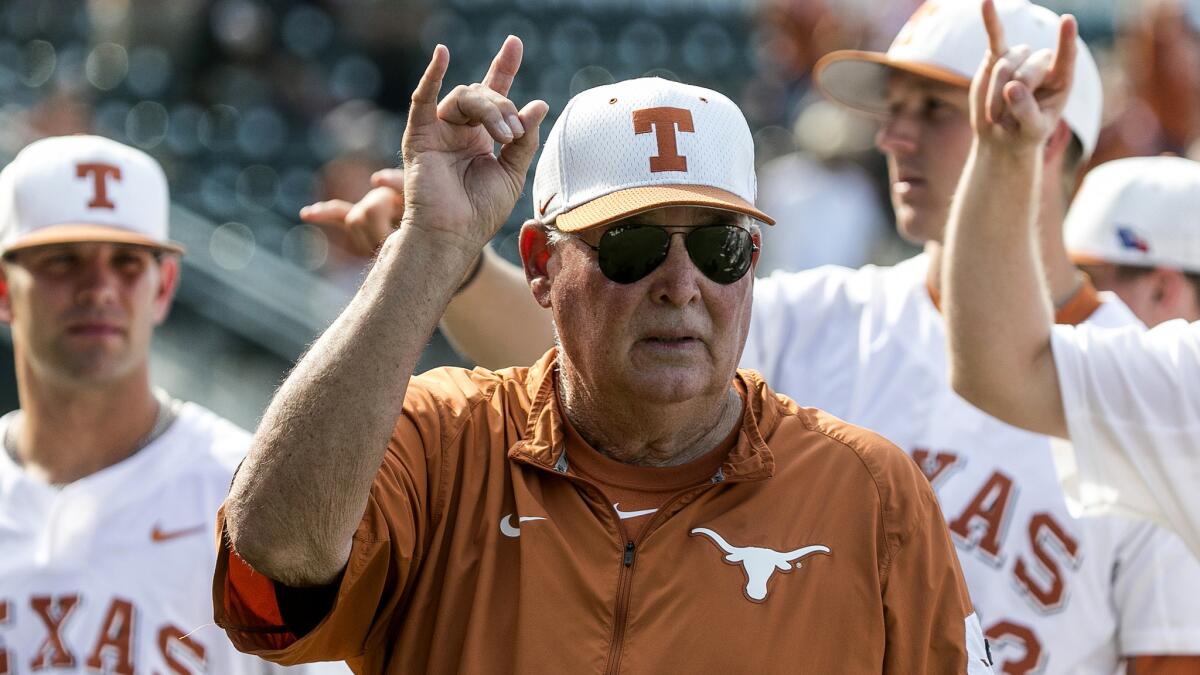
So far, Gordon has declined to take a stance, but is encouraged that students — and especially athletes — have made the effort to learn about their school’s history and speak out.
Three years ago, the university removed three Confederate statues from a grass mall, a decision that Gordon says prompted mild community reaction. Tinkering with a song that fans love to sing at football games — even in this time of national awareness — might prove thornier.
“Judging by the hate emails I’ve gotten, yes, the fight is pretty tough,” the professor said. “There’s a lot of passion about this.”
More to Read
Go beyond the scoreboard
Get the latest on L.A.'s teams in the daily Sports Report newsletter.
You may occasionally receive promotional content from the Los Angeles Times.




